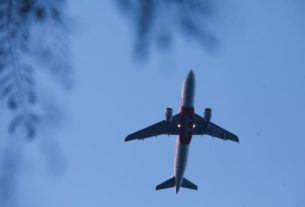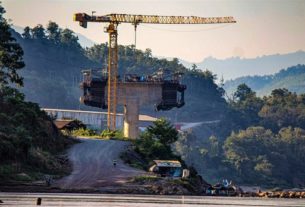 Old dam, new debate – Phrae province’s controversial Kaeng Sua Ten Dam project
Old dam, new debate – Phrae province’s controversial Kaeng Sua Ten Dam project
Bangkok Post Editorial
It has become a pattern for almost every government to revive the controversial Kaeng Sua Ten Dam project when there is a big flood in provinces located in the Mae Yom River’s basin, such as Phrae, Sukhothai, Phichit, and Phitsanulok provinces. The Pheu Thai-led-government is no exception.
Last week, caretaker Prime Minister Phumtham Wechayachai said the government would revive the mega-dam project initiated four decades ago as a hydro dam to produce electricity and supply water during the dry season.
However, this has been met with disagreements in the cabinet and with politicians from different parties, such as Capt Thamanat Prompow, the caretaker agriculture minister who oversees the Irrigation Department.
In the past, the project has failed to take off because of its severe environmental impact and fierce resistance from conservationists and local villagers.
The dam and reservoir were planned to be built in Mae Yom National Park, which covers 60,000 rai and includes the country’s last golden teak forest. To build the dam and a large reservoir upstream, about 1,500 families would need to be relocated.
Construction is expected to cost 50 billion baht (up from 10 billion baht when it was first drawn up), with funds to come from the government’s 200 billion baht water project.
Shortly after last week’s announcement about the dam, conservationists and villagers in Phrae province’s Sa-Ieab district slammed the idea. On Sunday, 150 potentially affected residents from Sa-Ieab district submitted a petition letter to Capt Thamanat. In the letter, villagers said building the dam would block the flow of 11 tributaries above the dam, but it wouldn’t do anything to the 66 tributaries located downstream. The petition letter asks the ministry to develop alternative water projects, such as building small dams and flood-retention areas in the main and the 77 tributary rivers in the whole basin instead of building a big standalone dam 50km north of Phrae province.
These villagers are not alone in their concerns. Over the past few decades, academic researchers from Chulalongkorn University and Thailand Development Research Institute have conducted feasibility studies. They have found that the project is not cost-effective and lacks public participation from local villagers.
An environmental impact study of this project was criticised in 1996 as incomplete, and the cabinet ordered the project suspended in 1997.
Now, water experts advocate an integrated water management plan with small dams and reservoirs along tributaries and creating large flood retention spaces in the Yom River Basin instead of spending a vast amount of money on a single big dam far upstream.
It is good news Capt Thamanat has listened to villagers and ordered the Irrigation Department to focus on completing small dams and reservoirs along the Yom River and its tributaries. Such water-regulating systems can help divert flood water through the river’s course. Ultimately, the agriculture minister will decide, and the cabinet will give a final endorsement.
The Yom River Basin and its communities need better water management and infrastructure. However, the solution must be based on a neutral, reliable, and updated study — not one supporting an old, expensive project with high social and environmental impacts. The government needs to conduct a new study to find an appropriate solution.
Source: https://www.bangkokpost.com/opinion/opinion/2859196/old-dam-new-debate


